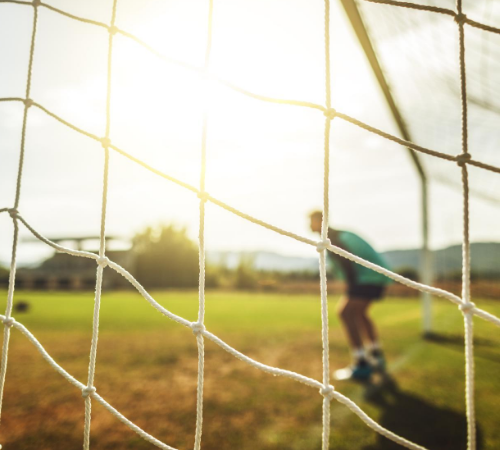Punching the ball is sometimes the only option we have, therefore it must be in our locker.
Punching the ball away
Sometimes you need to use your fist(s), the situation and the pressure might call for it. Most of the time we are required to punch the ball when moving through traffic for an aerial ball. The objective of the “punch” is to clear the ball from danger in a moment when we realize we have committed to attack the cross but cannot catch the ball nor parry or deflect it. You want to avoid punching the ball when you have the possibility of catching the ball. In a crowd, sometimes it is difficult to get to the ball so our arm is the best extension of us and can most of the time reach the ball at a higher point compared to the attacker’s head. At the top level, goalkeepers can punch with direction towards an open player, however this is very difficult and requires a high game IQ.
Can you punch instead of parry a ball to prolong the trajectory, yes, but you must have good timing because the surface area of a punch is smaller than that of an open hand parry. Also, it depends on the crowd and how much width they are covering, a punch will prolong the ball further than a parry simply because of the power one can generate with a punch. When prolonging the ball’s trajectory with a punch you want to try using your left fist when the ball is coming from your left, and your right when the ball is coming from your right, same goes for a parry. Given this rule, you can generate more momentum with your arm, as well as get to a higher position with your hand.
When punching, do we use two fists or one? Two fists are better than one, because we have more surface area and less room for a timing error. Two fists will also generate more power, but will shorten your overall reach to the ball, especially in a crowd and when the ball is coming across your body. When the ball is coming straight on, two fists are certainly preferred, however one fist might be necessary if reaching through a crowd to avoid a flick from the attacker.
As always, goalkeeping technique has exceptions because each play is very unique with respect to pressure, power, angle, speed, etc. Look at the picture below of Ederson, he is using one hand only and his left one on a cross from his right side. In this case, it looks as if he had to sprint forward to get to the ball and maybe mis-timed the best opportunity to get there. However, he committed to the play and must do what he can to get to the ball at the best possible moment.
Sometimes the crowd is too dense and in a superior position to the ball that a punch is our only hope to safely displace the ball’s trajectory.
How can you work on punching the ball?
- Individually, you can try keeping the ball up by using single hand punches or two fists together.
- Working with served tennis balls in a shorter distance to punch them is great for eye-hand coordination.
- Have a friend whip some crosses in and give it your best attempt each time.


